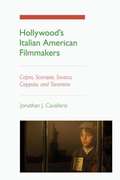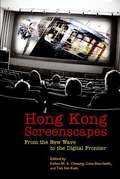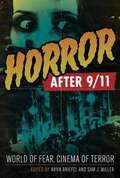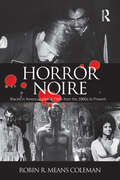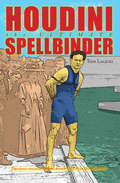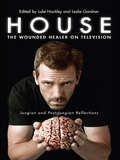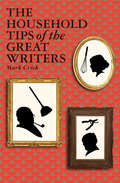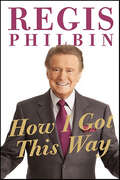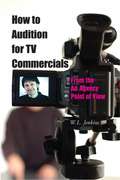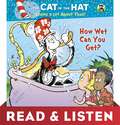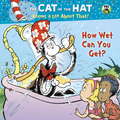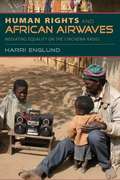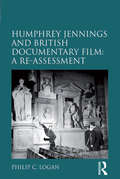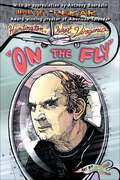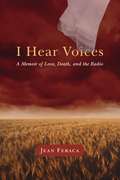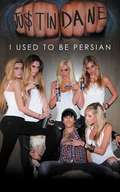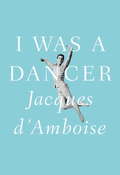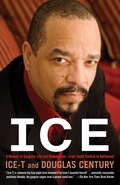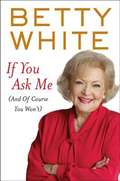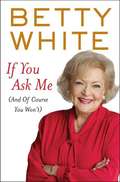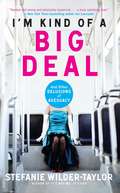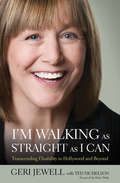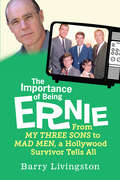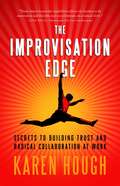- Table View
- List View
Hollywood's Italian American Filmmakers: Capra, Scorsese, Savoca, Coppola, and Tarantino
by Jonathan J. CavalleroHollywood's Italian American Filmmakers explores the different ways in which Italian American directors from the 1920s to the present have responded to their ethnicity. While some directors have used film to declare their ethnic roots and create an Italian American "imagined community," others have ignored or even denied their background. Jonathan J. Cavallero examines the films of Frank Capra, Martin Scorsese, Nancy Savoca, Francis Ford Coppola, and Quentin Tarantino with a focus on what the films reveal about each director's view on Italian American identities. Whereas Capra's films highlight similarities between immigrant characters and WASP Americans, Scorsese accepts his ethnic heritage but also sees it as confining. Similarly, many of Coppola's films provide a nostalgic treatment of Italian American identity, but with little criticism of the culture's more negative aspects. And while Savoca's movies reveal her artful ability to recognize how ethnic, gender, and class identities overlap, Tarantino's films exhibit a playfully postmodern engagement with Italian American ethnicity. Cavallero's exploration of the films of Capra, Scorsese, Savoca, Coppola, and Tarantino demonstrates how immigrant Italians fought prejudice, how later generations positioned themselves in relation to their predecessors, and how the American cinema, usually seen as a cultural institution that works to assimilate, has also served as a forum where assimilation was resisted.
Hong Kong Screenscapes
by Esther M.K. CheungGlobal connections and screen innovations converge in Hong Kong
Horror after 9/11
by Aviva Briefel Sam J. MillerHorror films have exploded in popularity since the tragic events of September 11, 2001, many of them breaking box-office records and generating broad public discourse. These films have attracted A-list talent and earned award nods, while at the same time becoming darker, more disturbing, and increasingly apocalyptic. Why has horror suddenly become more popular, and what does this say about us? What do specific horror films and trends convey about American society in the wake of events so horrific that many pundits initially predicted the death of the genre? How could American audiences, after tasting real horror, want to consume images of violence on screen? Horror after 9/11 represents the first major exploration of the horror genre through the lens of 9/11 and the subsequent transformation of American and global society. Films discussed include the Twilight saga; the Saw series; Hostel; Cloverfield; 28 Days Later; remakes of The Texas Chainsaw Massacre, Dawn of the Dead, and The Hills Have Eyes; and many more. The contributors analyze recent trends in the horror genre, including the rise of ‘torture porn,’ the big-budget remakes of classic horror films, the reinvention of traditional monsters such as vampires and zombies, and a new awareness of visual technologies as sites of horror in themselves. The essays examine the allegorical role that the horror film has held in the last ten years, and the ways that it has been translating and reinterpreting the discourses and images of terror into its own cinematic language.
Horror Noire: Blacks in American Horror Films from the 1890s to Present
by Robin R Means ColemanFrom King Kong to Candyman, the boundary-pushing genre of the horror film has always been a site for provocative explorations of race in American popular culture. In Horror Noire: Blacks in American Horror Films from 1890's to Present, Robin R. Means Coleman traces the history of notable characterizations of blackness in horror cinema, and examines key levels of black participation on screen and behind the camera. She argues that horror offers a representational space for black people to challenge the more negative, or racist, images seen in other media outlets, and to portray greater diversity within the concept of blackness itself. Horror Noire presents a unique social history of blacks in America through changing images in horror films. Throughout the text, the reader is encouraged to unpack the genre’s racialized imagery, as well as the narratives that make up popular culture’s commentary on race. Offering a comprehensive chronological survey of the genre, this book addresses a full range of black horror films, including mainstream Hollywood fare, as well as art-house films, Blaxploitation films, direct-to-DVD films, and the emerging U.S./hip-hop culture-inspired Nigerian "Nollywood" Black horror films. Horror Noire is, thus, essential reading for anyone seeking to understand how fears and anxieties about race and race relations are made manifest, and often challenged, on the silver screen.
Houdini: The Ultimate Spellbinder
by Tom LalickiOriginally published as: SPELLBINDER: The Life of Harry Houdini.He was born Ehrich Weiss but, at an early age, he chose another name for himself. He wanted a name to suit his career of magic and entertainment and he chose a name that paid homage to one of the legendary magicians of all time: Robert Houdin. His illusions and escapes were more astonishing and more challenging than anyone had ever done before and he eclipsed the names of all other magicians as his fame reached around the world, made him famous and made him the most famous illusionist ever.Houdini disappeared through brick walls. He escaped from straitjackets and then straitjackets immersed in water. He performed escapes in public places and from jail cells in major cities--and the crowds flocked to his performances.Tom Lalicki tells Houdini's story with a fascinating mix of text and images, revealing the facts and juxtaposing them with startling images of a master entertainer performing masterfully and mysteriously, mesmerizing his audiences and mystifying experts with his skill and his invention.
House: Jungian and Post-Jungian Reflections
by Luke Hockley Leslie GardnerHouse MD is a globally successful and long-running medical drama. House: The Wounded Healer on Television employs a Jungian perspective to examine the psychological construction of the series and its namesake, Dr Gregory House. The book also investigates the extent to which the continued popularity of House MD has to do with its representation of deeply embedded cultural concerns. It is divided into three parts - Diagnosing House, Consulting House and Dissecting House, - and topics of discussion include: specific details, themes, motifs and tropes throughout the series narrative, character and visual structure the combination of performative effects, text and images of the doctor and his team the activities of the hero, the wounded healer and the puer aeternus. Offering an entirely fresh perspective on House MD, with contributions from medical professionals, academics and therapists, this book is essential reading for students and scholars of Jungian psychology. The inclusion of a glossary of Jungian terms means that this book can also be enjoyed by fans of House MD who have been seeking a more in-depth analysis of the series.
The Household Tips of the Great Writers
by Mark CrickWhat would literary lions tell us about cooking, cleaning, and gardening? A three-book collection of parody and practical advice by a &“brilliant&” humorist (The Financial Times). The Household Tips of Great Writers covers all your household needs, indoors and outdoors, from pruning a rose bush with Pablo Neruda to mending a dripping tap with Jean-Paul Sartre. Throwing a tea party? Irvine Welsh has the recipe for the perfect chocolate cake, though that's not all he's cooking. Brilliant, hilarious, and always pitch-perfect, this omnibus edition of Mark Crick's wonderful books of literary pastiche will inform and entertain the most erudite of householders. Includes: Sartre&’s Sink &“This brilliantly inventive DIY manual both parodies and celebrates great authors ... Crick is a brilliant literary ventriloquist.&”—The Financial Times Kafka&’s Soup &“These literary and visual pastiches of writers and their relationships with food provide a laugh a line as they skewer their literary originals with effortless accuracy...a masterpiece.&”—The Guardian Machiavelli&’s Lawn &“Erudite and enjoyable prose, no less rewarding for its horticultural accuracy.&”—Times Literary Supplement
How I Got This Way
by Regis PhilbinIn this entertaining memoir, the irrepressible "Reege" - consummate talk show host, man about town, loving husband, father, and yes, obsessive sports fan-looks back at his years in show business. One of the most popular television and cultural icons ever, Regis Philbin entertained television audiences for more than fifty years—as a beloved morning-show host (Live with Regis and Kelly), a nighttime game-show host (Who Wants to Be a Millionaire?) and also as a fixture on national and local late-night talk shows. The irrepressible “Reege” has regaled television audiences with his stories for more than half a century, but he’s saved the most hilarious, surprising, heartfelt, and inspiring tales for How I Got This Way. Both a fascinating show business memoir and a delightful primer for living the good life rolled into one, How I Got This Way is Reege being Reege, just the way we love him, as he shares the secrets to success and happiness that he has learned from his innumerable celebrity encounters, his close, personal friendships, and, of course, his relationship with his loving wife and family.
How to Audition for TV Commercials
by W. L. JenkinsWhat do ad agencies look for when casting TV commercials? This insider's guide, written by a former actor turned ad agency exec, has the answers. It provides step-by-step instructions to help actors understand and master the entire process, from assessing one's looks and personality to the agency preproduction process, from reading scripts and understanding storyboards to preparing for the audition, doing the shoot, and more.
How Wet Can You Get? (Pictureback(R))
by Tish RabeRead and listen along with the Cat in the Hat! Sally and Nick are playing in the rain—and getting really muddy! So when the Cat in the Hat offers to show them how animals get clean, the kids are keen to find out. But can Sally and Nick really get rid of the mud by taking dust baths, like a sparrow? Or by licking themselves, like a lion? And where are they going to find an oxpecker to pick it off them, like a hippo has? (Besides, oxpeckers tickle!) Maybe there's a better way for a kid to get clean? Based on an episode of the hit PBS Kids tv show The Cat in the Hat Knows a Lot About That!This ebook includes Read & Listen audio narration.
How Wet Can You Get? (Pictureback(R))
by Joe Mathieu Aristides Ruiz Tish RabeSally and Nick are playing in the rain--and getting really muddy! So when the Cat in the Hat offers to show them how animals get clean, the kids are keen to find out. But can Sally and Nick really get rid of the mud by taking dust baths, like a sparrow? Or by licking themselves, like a lion? And where are they going to find an oxpecker to pick it off them, like a hippo has? (Besides, oxpeckers tickle!) Maybe there's a better way for a kid to get clean? Based on an episode of the new PBS Kids program The Cat in the Hat Knows a Lot About That!, this 16-page Pictureback comes with a sheet of adorable stickers featuring all the mud encrusted characters.
Human Rights and African Airwaves: Mediating Equality on the Chichewa Radio
by Harri EnglundHuman Rights and African Airwaves focuses on Nkhani Zam'maboma, a popular Chichewa news bulletin broadcast on Malawi's public radio. The program often takes authorities to task and questions much of the human rights rhetoric that comes from international organizations. Highlighting obligation and mutual dependence, the program expresses, in popular idioms and local narrative forms, grievances and injustices that are closest to Malawi's impoverished public. Harri Englund reveals broadcasters' everyday struggles with state-sponsored biases and a listening public with strong views and a critical ear. This fresh look at African-language media shows how Africans effectively confront inequality, exploitation, and poverty.
Humphrey Jennings and British Documentary Film: A Re-assessment
by Philip C. LoganHumphrey Jennings ranks amongst the greatest film makers of twentieth century Britain. Although a relatively unknown figure to the wider public, his war-time documentaries are regarded by many (including Lord Puttnam, Lindsay Anderson and Mike Leigh) as amongst the finest films of their time. Groundbreaking both in terms of their technique and their interest in, and respect for, the everyday experiences of ordinary people, these films are much more than mere government propaganda. Instead, Jennings work offers an unparalleled window into the British home-front, and the hopes, fears and expectations of a nation fighting for its survival. Yet until now, Jennings has remained a shadowy figure; with his life and work lacking the sustained scholarly investigation and reassessment they deserve. As such film and social historians will welcome this new book which provides an up-to-date and thorough exploration of the relationships between Jennings life, ideas and films. Arguing that Jennings's film output can be viewed as part of a coherent intellectual exercise rather than just one aspect of the artistic interests of a wide ranging intellectual, Philip Logan, paints a much fuller and more convincing picture of the man than has previously been possible. He shows for the first time exactly how Jennings's artistic expression was influenced by the fundamental intellectual, social and cultural changes that shook British society during the first decades of the twentieth century. Combining biography, social history and international artistic thought, the book offers a fascinating insight into Jennings, his work, the wider British documentary film movement and the interaction between art and propaganda. Bringing together assessments of his tragically short life and his films this book is essential reading for anyone with an interest in British cinema or the social history of Britain in the 1930s and 40s.
Huntington, West Virginia "On the Fly"
by Harvey PekarWith an appreciation by Anthony Bourdain HAVE ATTITUDE, WILL TRAVEL Harvey Pekar changed the face of comics when his American Splendor series replaced traditional slam-bang superhero action with slice-of-life tales of his own very ordinary existence in Cleveland, Ohio, as a file clerk, jazz-record collector, and philosophical curmudgeon. Much as Seinfeld famously transcended sitcom conventions by being &“a show about nothing,&” Pekar&’s deadpan chronicles of regular life—peppered with wry and caustic reflections—have transformed comics from escapist fantasy into social commentary with voice balloons. Huntington, West Virginia &“On the Fly&” is prime Pekar, recounting the irascible everyman&’s on-the-road encounters with a cross section of characters—a career criminal turned limo-driving entrepreneur, a toy merchant obsessed with restoring a vintage diner, comic-book archivists, indie filmmakers, and children of the sixties—all of whom have stories to tell. By turns funny, poignant, and insightful, these portraits à la Pekar showcase a one-of-a-kind master at work, channeling the stuff of average life into genuine American art.
I Hear Voices
by Jean FeracaJean Feraca’s road to self-fulfillment has been as quirky and demanding as the characters in her memoir. A twenty-five-year veteran of public radio broadcasting, Feraca is also a writer and a poet. She is a talk show host beloved for her unique mixture of the humanities, poetry, and journalism, and is the creator of the pioneering international cultural affairs radio programHere on Earth: Radio without Borders. In this searing memoir, Feraca traces her own emergence. She pulls back the curtain on her private life, revealing unforgettable portraits of the characters in her brawling Italian American family: Jenny, the grandmother, the devil woman who threw Casey Stengel down an excavation pit; Dolly, the mother, a cross between Long John Silver and the Wife of Bath who in battling mental illness becomes the scourge of a Lutheran nursing home; and Stephen, the brilliant but troubled older brother, an anthropologist who was adopted into a Sioux tribe. While building a career and raising two sons, Feraca learns empathy when she faces her brother’s cancer and her mother’s dementia. As she finds her voice and sense of self, her story moves far afield: a sojourn in a Benedictine monastery, a courtship through the California wine country, a dip into Dante’s hell in Italy’s Appalachia, an expedition in the Peruvian Amazon, a day under a huppah as she marries a Jewish scientist. Unique, eccentric, and distinctive,I Hear Voicesis a memoir that tells a universal story of a woman evolving to fully embrace her life and the world. Best of all, from the many voices in Feraca’s life emerges one that will be familiar to old fans-and delightful to new ones-leaping off the written page as compelling, eloquent, and surprising as ever. Outstanding Book, selected by the American Association of School Librarians, and Best Books for General Audiences, selected by the Public Library Association Winner, August Derleth Book-length Nonfiction Award, The Council for Wisconsin Writers
I Used to Be Persian: A Comedic Memoir
by Justin DaneFeatured on MTV's "True Life: I Might Disappoint My Parents," comedian Justin Dane tested the patience of his conservative Persian-Jewish parents. In I Used to be Persian, "a, um, slightly exaggerated memoir" that his parents developed an anti-coalition towards, Dane offers contentious commentary on his family's--well, to state it nicely--bizarre antics. Oh, and Dane also offers a "brilliant lampoon of traditional Persian society with a flare only reminiscent of satirist Jonathon Swift's," according to the humble writer himself. (Yeah, Dane urged me present him as an "intellectual bea$t" in this blurb, but, alas, my passive-aggressive sarcasm leaks through). Readers should note that Dane's portrayal of Persians isn't an "accurate reflection of all Persians just as semi-schizophrenic, lesbian-lovin' hypochondriacs in Black Swan aren't manifestations of all ballerinas... duh. Or how a psychotic pageant mama's desire to inject Botox into her baby isn't an indication of all pageant mamas desires... hopefully." Perhaps the Persian population would appreciate Dane's disclaimer. After all, his particular Persian family is pretty eccentric. "Deez eez ze real reason Michael Jackson died!" screams Dane's Persian mama, perceiving Advil pills as ecstasy tablets. Dane then portrays his parents' melodramatic "Persian-styled interventions." And the laughs just continue. As if in a flea market in Tehran, Iran, Dane's mother attempts to negotiate prices in Best Buy. Oh, did I mention she shoves food down Dane's throat whenever his friends are around? (Embarrassing). Or that she nearly disowned him for marrying a girlfriend in Vegas? But beyond detailing the anecdotes within his "Persian cave," as well as the Beverly Hills Persian population, Dane exhibits an estrangement between traditional Persians and contemporary American society... I guess. (Hey, every good memoir needs some intelligent underlying theme, too). Dane also strikes an emotional chord within his readers. Yup, Dane elaborates on his parents' "brain washing quest to bring his hairy ass into the Dark Doctor Dynasty" amidst his aspiration to become an entertainment extraordinaire (i.e., Breetney Spears vanabee" cerca bald-hobo-attacking-car era, according to Dane's Persian parents). In fact, Dane's mother calls his school to change his major to "Medical Relations, a nonexistent curriculum" in one chapter. Needless to say, through his wild wit and disobedient disposition, Dane shatters his Persian parents' idea of perfection; he's "the insane tribal divergent" of his Persian family. And readers are there laughin' (and cringin') during every hairy situation. Pun intended.
I Was a Dancer
by Jacques D'Amboise"Who am I? I'm a man; an American, a father, a teacher, but most of all, I am a person who knows how the arts can change lives, because they transformed mine. I was a dancer." In this rich, expansive, spirited memoir, Jacques d'Amboise, one of America's most celebrated classical dancers, and former principal dancer with the New York City Ballet for more than three decades, tells the extraordinary story of his life in dance, and of America's most renowned and admired dance companies. He writes of his classical studies beginning at the age of eight at The School of American Ballet. At twelve he was asked to perform with Ballet Society; three years later he joined the New York City Ballet and made his European debut at London's Covent Garden. As George Balanchine's protégé, d'Amboise had more works choreographed on him by "the supreme Ballet Master" than any other dancer, among them Tchaikovsky Pas de Deux; Episodes; A Midsummer's Night's Dream; Jewels; Raymonda Variations.He writes of his boyhood--born Joseph Ahearn--in Dedham, Massachusetts; his mother ("the Boss") moving the family to New York City's Washington Heights; dragging her son and daughter to ballet class (paying the teacher $7.50 from hats she made and sold on street corners, and with chickens she cooked stuffed with chestnuts); his mother changing the family name from Ahearn to her maiden name, d'Amboise ("It's aristocratic. It has the 'd' apostrophe. It sounds better for the ballet, and it's a better name"). We see him. a neighborhood tough, in Catholic schools being taught by the nuns; on the streets, fighting with neighborhood gangs, and taking ten classes a week at the School of American Ballet . . . being taught professional class by Balanchine and by other teachers of great legend: Anatole Oboukhoff, premier danseur of the Maryinsky; and Pierre Vladimiroff, Pavlova's partner. D'Amboise writes about Balanchine's succession of ballerina muses who inspired him to near-obsessive passion and led him to create extraordinary ballets, dancers with whom d'Amboise partnered--Maria Tallchief; Tanaquil LeClercq, a stick-skinny teenager who blossomed into an exquisite, witty, sophisticated "angel" with her "long limbs and dramatic, mysterious elegance . . ."; the iridescent Allegra Kent; Melissa Hayden; Suzanne Farrell, who Balanchine called his "alabaster princess," her every fiber, every movement imbued with passion and energy; Kay Mazzo; Kyra Nichols ("She's perfect," Balanchine said. "Uncomplicated--like fresh water"); and Karin von Aroldingen, to whom Balanchine left most of his ballets. D'Amboise writes about dancing with and courting one of the company's members, who became his wife for fifty-three years, and the four children they had . . . On going to Hollywood to make Seven Brides for Seven Brothers and being offered a long-term contract at MGM ("If you're not careful," Balanchine warned, "you will have sold your soul for seven years") . . . On Jerome Robbins ("Jerry could be charming and complimentary, and then, five minutes later, attack, and crush your spirit--all to see how it would influence the dance movements"). D'Amboise writes of the moment when he realizes his dancing career is over and he begins a new life and new dream teaching children all over the world about the arts through the magic of dance. A riveting, magical book, as transformative as dancing itself.
Ice: A Memoir of Gangster Life and Redemption from South Central to Hollywood
by Douglas Century Ice-TMy life's been a great story / In the ultimate war / Should I ill or do right? / Make peace or go raw?--Ice-T, "Exodus" He's a hip-hop icon credited with single-handedly creating gangsta rap in the 1980s. Television viewers know him as Detective Odafin "Fin" Tutuola on the top-rated TV drama Law & Order: SVU. But where the hype and the headlines end, the real story of Ice-T--the one few of his millions of fans have ever heard--truly begins. Ice is Ice-T in his own words--raw, uncensored, and unafraid to speak his mind. About his orphan upbringing on the gang-infested streets of South Central Los Angeles. About his four-year stint in the U.S. Army's famed "Tropic Lightning" outfit. About his successful career as a hustler and thief, the car crash that nearly killed him, and the fateful decision to turn away from a life of crime and forge his own path to international entertainment stardom. Ice by Ice-T is both a tell-it-like-it-is tale of redemption and a star-studded tour of the pop culture firmament. The acclaimed rapper and actor shares never-before-told stories about friends like Tupac, Dick Wolf, Chris Rock, and an antler-clad Flavor Flav, among others. Readers will ride along as Ice-T's incendiary rock band Body Count narrowly escapes from a riotous mob of angry concertgoers in Milan, and listen in as the music legend battles the self-appointed censors over his controversial "Cop Killer" single. Most of all, Ice is the place where one of the game's most opinionated players breaks down his own secret plan for living, offering up candid observations on marriage and monogamy, the current state of hip-hop, and his latest passion: doing one-on-one gang interventions and mentoring at-risk youths around the country. With insights into the cutthroat world of the street--and the cutthroat world of Hollywood--Ice is the inspirational story of a true American original.From the Hardcover edition.
If You Ask Me: (And of Course You Won't)
by Betty WhiteThe New York Times bestseller from the beloved actress who's made us laugh on shows from The Mary Tyler Moore Show to Saturday Night Live! In this candid take on everything from the unglamorous reality behind red-carpet affairs to her beauty regimen ("I have no idea what color my hair is, and I never intend to find out"), Betty White shares her observations about life, celebrity, and love (for humans and animals). Filled with photos, If You Ask Me is funny, sweet, and straight to the point-just like Betty.
If You Ask Me (and Of Course You Won’t)
by Betty WhiteBetty White delivers a hilarious, slyly profound take on love, life, celebrity, and everything in between.
I'm Kind of a Big Deal: And Other Delusions of Adequacy
by Stefanie Wilder-TaylorWARNING TO READERS: The Author of This Book is Kind of Crazy, Kind of Delusional, and All Kinds of Hilarious Whether she's driving a limo for former Family Ties star Justine Bateman, dancing in the dark for a rarely seen Bob Dylan music video, or stalking a bachelor reject from TV's Love Connection, Stefanie Wilder-Taylor is kind of a big deal--at least in her own mind. Smart, screwy, and scathingly funny, her tell-all essays capture every cringe-worthy moment of her kind-of famous life. From bombing as a stand-up comic for born-again Christians, to winging it as a singing waitress in an Italian restaurant, to posting open letters to Angelina Jolie and David Hasselhoff, this unstoppable L.A. transplant refuses to give up on her dreams--no matter how ill-advised--and shows us a side of Hollywood better kept hidden. When it comes to funny women--unplugged and unleashed--they don't get any wilder than Stefanie Wilder-Taylor. . . .
I'm Kind of a Big Deal
by Stefanie Wilder-TaylorWARNING TO READERS: The Author of This Book is Kind of Crazy, Kind of Delusional, and All Kinds of Hilarious. Whether she's driving a limo for former Family Ties star Justine Bateman, dancing in the dark for a rarely seen Bob Dylan music video, or stalking a bachelor reject from TV's Love Connection, Stefanie Wilder-Taylor is kind of a big deal--at least in her own mind. Smart, screwy, and scathingly funny, her tell-all essays capture every cringe-worthy moment of her kind-of famous life. From bombing as a stand-up comic for born-again Christians, to winging it as a singing waitress in an Italian restaurant, to posting open letters to Angelina Jolie and David Hasselhoff, this unstoppable L.A. transplant refuses to give up on her dreams--no matter how ill-advised--and shows us a side of Hollywood better kept hidden. When it comes to funny women--unplugged and unleashed--they don't get any wilder than Stefanie Wilder-Taylor. . . .
I'm Walking as Straight as I Can: Transcending Disability in Hollywood and Beyond
by Geri JewellA candid memoir of building an acting career—and a happy life—with cerebral palsy: &“It&’s a joy to read this book&” (Ian McShane). Exposing real pain, unstoppable perseverance, and unquestionable faith in the human spirit, this autobiography offers a true glimpse beyond actress Geri Jewell&’s public image as a one-dimensional hero. Born with cerebral palsy, Jewell made history when she became the first person with a disability cast in a recurring role on American television in The Facts of Life, and in the years that followed she experienced a string of other successes, including a performance at the White House and a role on HBO&’s Deadwood. But along with such accomplishments, this personal story also depicts some of the less-than-rosy events that happened behind closed doors during her initial climb to fame—among them, her release from The Facts of Life; her manager&’s embezzlement of the money she made on the show; and her struggle with chronic pain, despair, and a fear of revealing her true sexual identity. Told with grace and humor, this inspirational narrative presents an honest portrayal of a woman who refused to give up when others kept knocking her down.
The Importance of Being Ernie: From My Three Sons to Mad Men, a Hollywood Survivor Tells All
by Barry LivingstonI SPENT MY ENTIRE LIFE PLAYING NERDS. . .--Barry LivingstonA true Hollywood survivor, Barry Livingston is one of the few child stars who turned early success into a lifelong career. As "Ernie" on the 1960s sit-com My Three Sons--which also featured his real-life brother Stanley as "Chip"--Barry become instantly recognizable for his horn-rimmed glasses and goofy charm. Five decades later, after working on TV shows like Mad Men and Desperate Housewives, and in feature films like Zodiac and The Social Network, Barry Livingston is one actor who knows The Importance of Being Ernie. . .In this fascinating and funny memoir, Barry reveals his most unforgettable anecdotes: Working on set with Fred McMurray, Ozzie and Harriet, Lucille Ball and Dick Van Dyke. Riding a limousine with Elvis Presley. Trying to upstage Ron "Opie" Howard. Even shooting a Superbowl beer commercial with Brad Pitt. At first, Barry's lazy eye and horn-rimmed glasses nearly derailed his career, getting him kicked off his first major film starring Paul Newman. Eventually, his "nerdy" look became his biggest asset, landing Barry a recurring role on Ozzie & Harriet and a regular part on My Three Sons. Fifty years later, Barry is still going strong--from the stage and small screen to to featured film roles opposite Adam Sandler and Robert Downey, Jr.. Like most Hollywood actors, Barry experienced some incredible highs and lows along the way, but he never gave up. "I've been around half a century," he affirms. "And I'm not going away." This is how one child star beat the odds and survived the dark side of the Hollywood dream factory--with charm, wit, determination. . .and big horn-rimmed glasses. This is The Importance of Being Ernie.Barry Livingston has been a professional actor on stage and screen for more than fifty years. Best known for his role as "Ernie" on the long-running TV program, My Three Sons, Livingston continues to appear regularly in feature films and television shows. He is married with two children, and lives in Los Angeles.Praise For The Importance Of Being Ernie"This wryly told saga of a child star who miraculously avoided the crash-and-burn fate of so many of the once-famous. . . an engaging tale of the unusual life of a humorous, modest, and observant man. Barry Livingston delivers a frank and funny tale of TV, movies, and family life." --Brent Maddock, co-author of Tremors and Short Circuit"For a child star, he's almost normal. This poor kid had to sit on William Frawley's lap; we're lucky he's not on a roof with a rifle. . .. Barry is one of those rare child stars who grew up to become an accomplished adult actor. Having logged fifty years in show business, working with everyone from Lucille Ball and Jack Benny to Brad Pitt and Robert Downey, Jr., he's got a great story to tell." --Paul Jackson, Producer Charmed and Sliders."I have known Barry Livingston since he was nine years old. He always made me laugh. Now he's kept me awake reading his wonderful autobiography. There's a lot of talent in those size eight shoes." --Gene Reynolds, director of TV's M.A.S.H.and Promised Land
The Improvisation Edge: Secrets to Building Trust and Radical Collaboration at Work
by Karen HoughThere are all kinds of books about building trust. But The Improvisation Edge is the only one that draws on the wisdom of those who are truly experts in the dynamics of trust-building: theatrical improvisers. Think about it: other than combat, no situation requires more extreme trust than improvisation. You have no script, costumes or set--nothing to depend on but your fellow improvisers. When you collaborate on such an intense level you intrinsically engender trust. Karen Hough describes four principles that will help leaders, managers, trainers, and front-line employees adopt the improviser's mindset. You'll learn techniques to create a positive environment, encourage fearless participation and selfless collaboration, play to your own and your colleagues' strengths, and turn surprises, mistakes and disasters into opportunities for something new, unexpected and maybe better than you planned. The Improvisation Edge offers a fun, engaging and very hands-on way to build the kind of organizational trust and collaboration that makes breakthrough business results possible.
